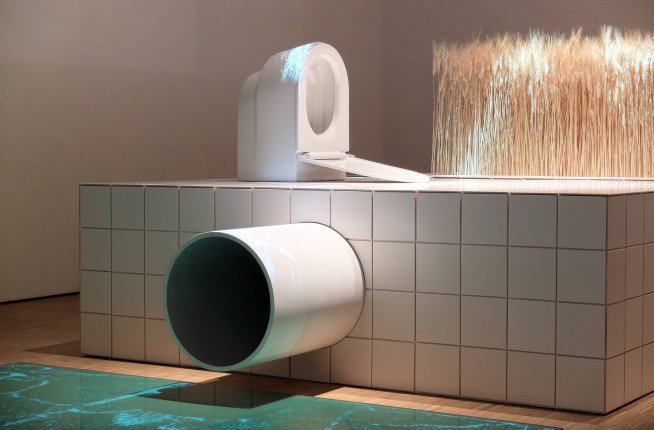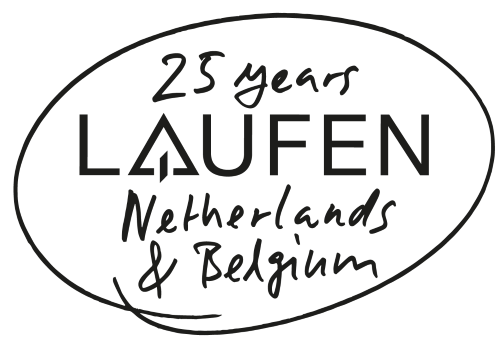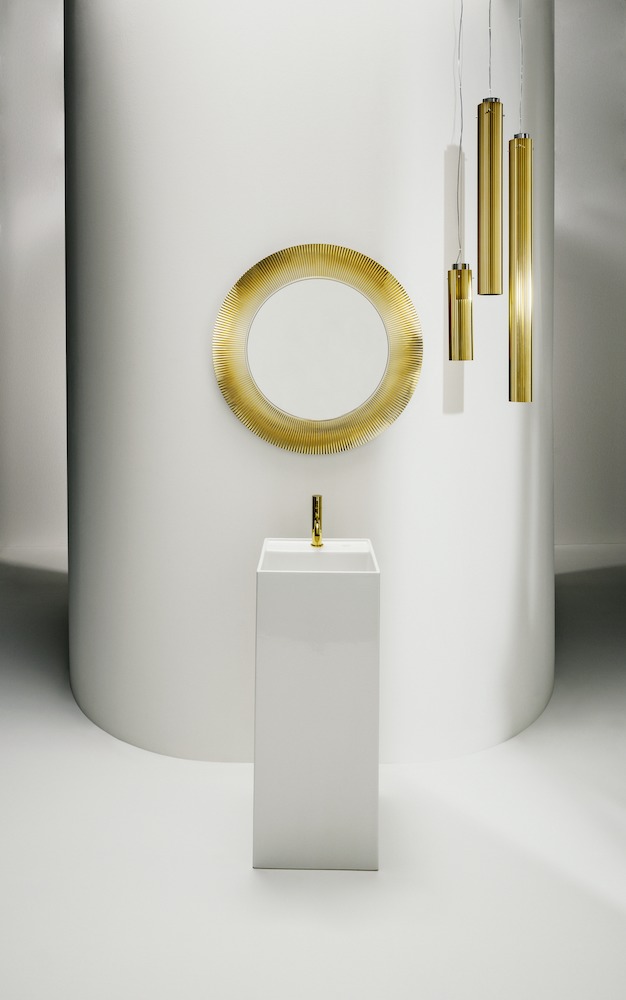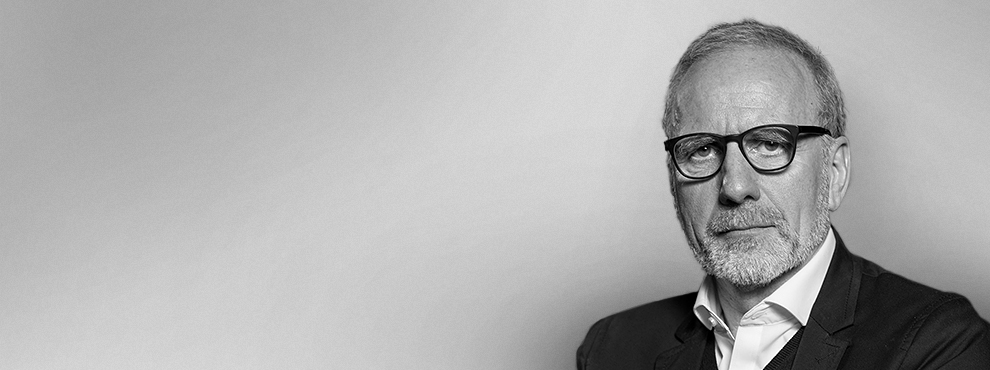
Interview with Peter Wirz
“Consistency, quality and efficiency are the hallmarks of our partnership.”
Peter Wirz and Vetica, his design and branding agency, have played an active part in LAUFEN’s success for the last 22 years. Born at Brienz (Switzerland) in 1960, Peter Wirz is a qualified mechanical engineer who made a name for himself as a top-class athlete in his earlier years. Together with his team, he serves many renowned companies across the globe from bases in Lucerne, Taipei, Hamburg and Hong Kong.
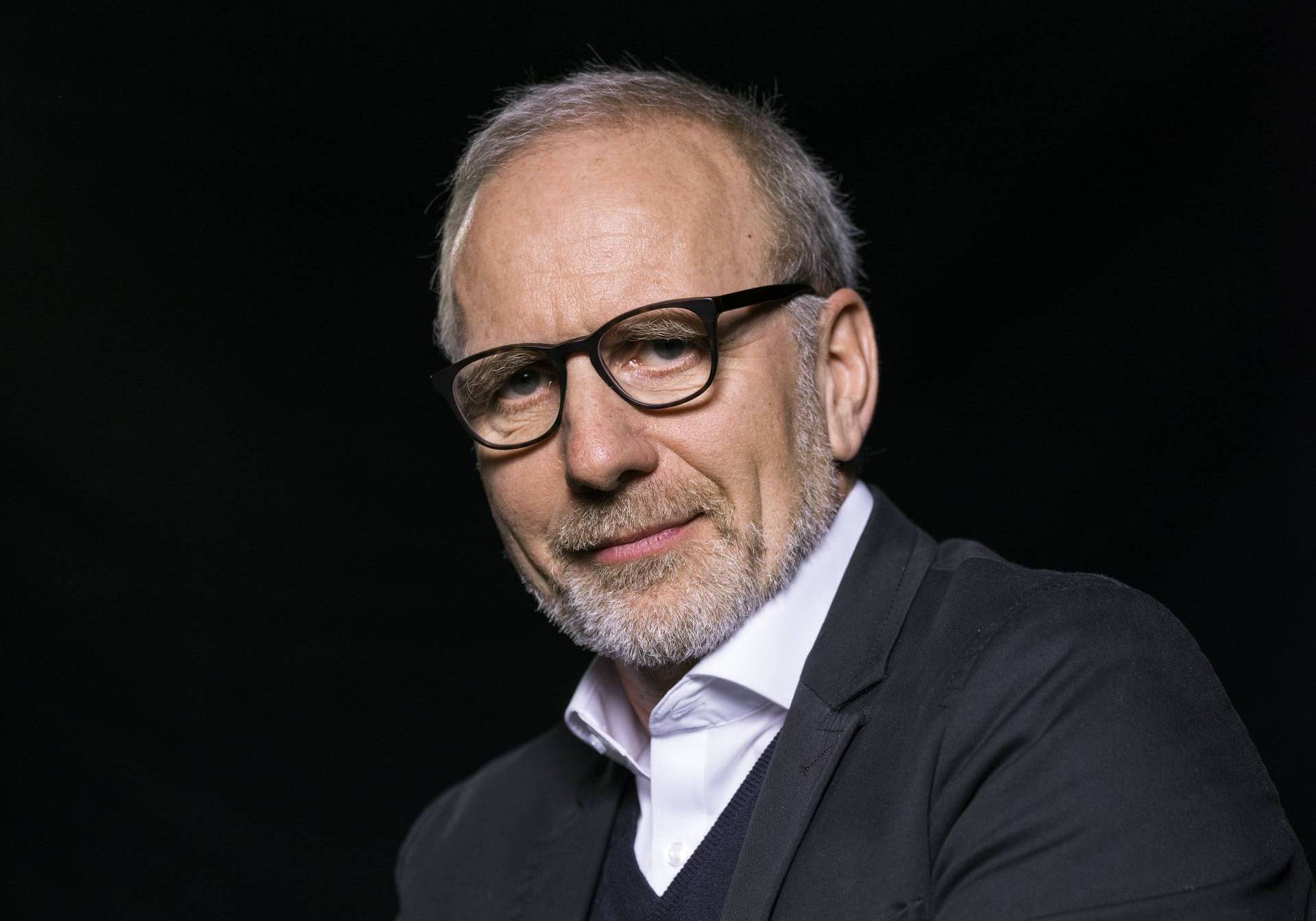
Mr. Wirz, you achieved great success as a middle-distance runner in the 1980s. Your collaboration with the LAUFEN company has already become more of a long-distance event because you and Vetica, your design agency, have now been working with LAUFEN for 22 years. Do you see any parallels between your activities as an athlete and as a designer?
Peter Wirz: Well, you need to understand a little German to grasp this: “Laufen” can actually mean “running” or “racing” in that language. So you could certainly say that there’s a parallel between my past activities – and my previous passion – as a runner and the part I play in helping the LAUFEN company to run in the race for perfection. An athletic career in elite sport is an important and valuable school of life that teaches you to take an equally positive attitude to success and defeat. And another parallel is the focus on a specific goal – on a particular major event such as the Olympic Games in my past life, or on a key presentation nowadays.
How did your collaboration with LAUFEN begin?
Peter Wirz: In 1998, when I was a freelance designer, I took over the M&E Design agency in Zug. Both of their designers, W. Eichenberger and E. Muchenberger, were already working for LAUFEN back then. And it was in that same year that I first came into contact with the LAUFEN company through the “Moderna” project.
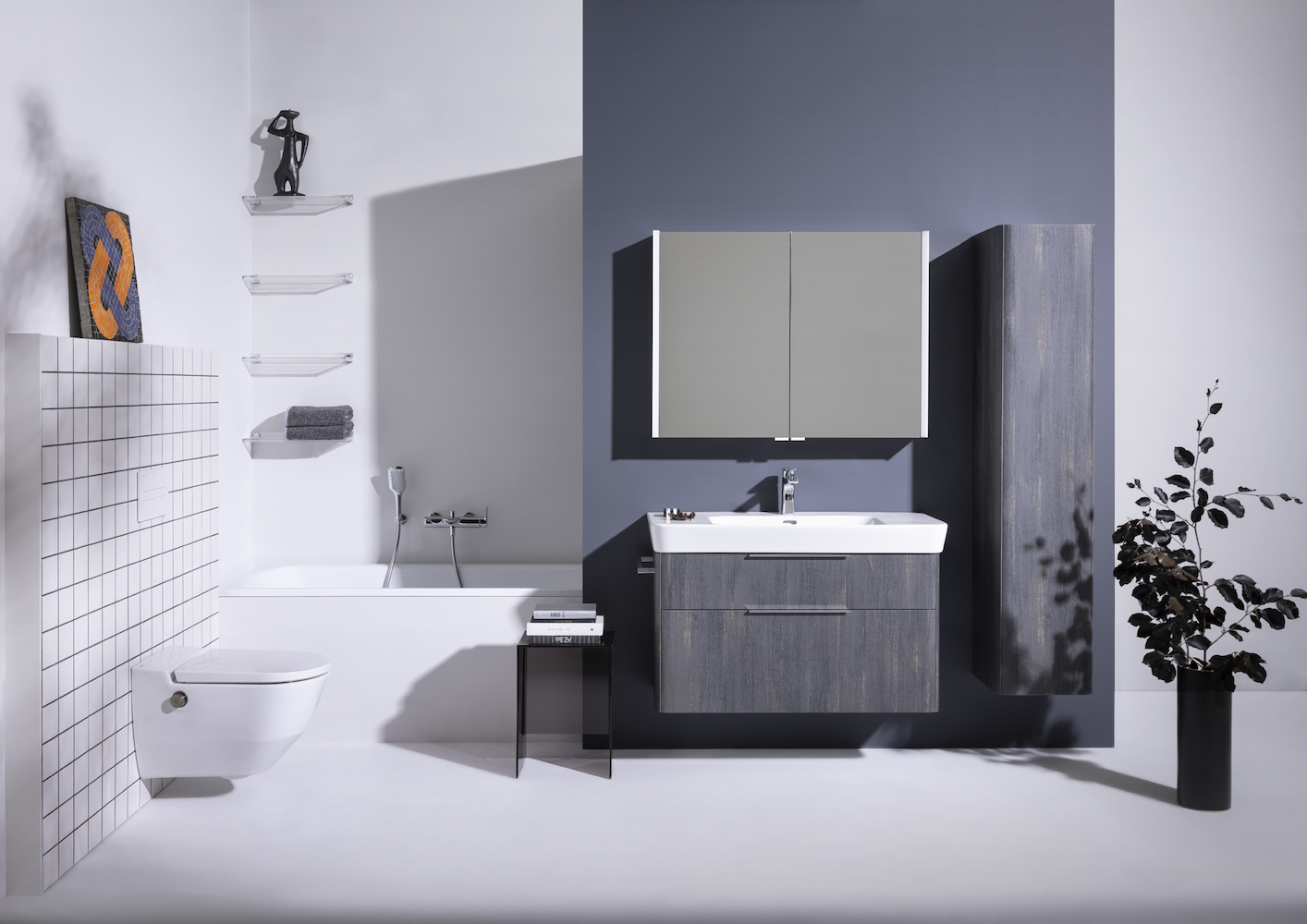
What were the first products you developed for LAUFEN?
Peter Wirz: One of the first large-scale projects was the “LAUFEN PRO” series in 2005. “LAUFEN PRO” is a fully comprehensive bathroom programme that offers the optimal solution for all room situations and requirements. Thanks to our close working relationship as partners, this series became a huge success – and it has also been copied by a number of providers over the years. The programme now comprises a total of 34 washbasins and 18 WCs, as well as bidets and matching bathtubs, shower trays and the exclusive range of furniture. All the elements can be combined freely for every conceivable application area and all possible spatial conditions.
How many products have you designed for LAUFEN thus far, and how many have gone into production?
Peter Wirz: If you count up all the products with their various sizes and sub-versions, the total certainly comes to over 250 products by now. As far as I know, every single one of them went into production and was launched on the market.
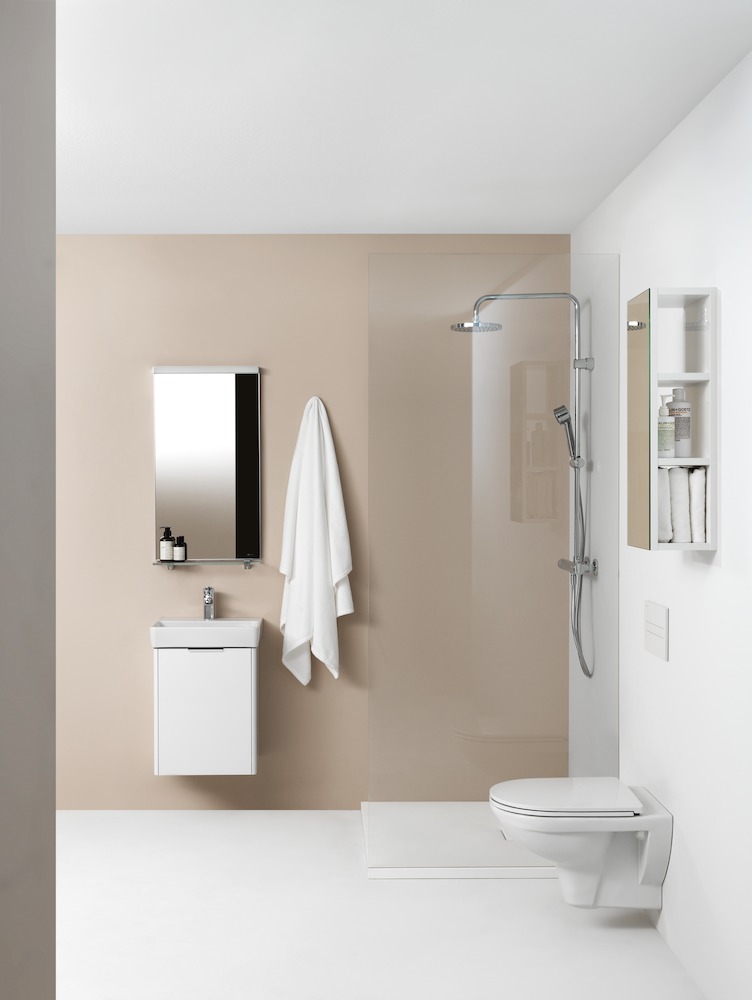
Mr. Reymond, LAUFEN works exclusively with external designers for its new collections. Why is that?
Alain Reymond: LAUFEN’s core expertise is our knowledge about ceramic production. We have accumulated this ceramic expertise over many years, and it now allows us to produce ceramics of absolutely perfect quality. Our expertise in ceramics was the basis for developing know-how that covers the entire bathroom – enabling LAUFEN to create bathrooms of the very highest standard. Of course, we expect design to meet the same standards, in terms of the formal and functional aspects of our products. The culture of cooperation is very much alive at LAUFEN. So everything that we cannot do to perfection ourselves is developed in close collaboration with partners. That also explains why we only work with the best external designers. Depending on the project, we collaborate with various creatives who develop the best results from our briefings thanks to their distinctive style, creativity, aesthetic talent, sense of functionality and genius for innovation. This is also true of Peter Wirz, who has already designed numerous successful collections for LAUFEN.
With Peter Wirz in the team, you have a highly experienced creative thinker on board. What do you regard as the hallmarks of your working relationship with Vetica?
Alain Reymond: I’m very pleased that you mention Peter Wirz as a member of our team. Working together for 22 years creates a certain bond, and Peter Wirz has actually become an important part of us. He has an intimate knowledge of LAUFEN’s culture – our DNA – and during the years he has worked with LAUFEN, he has certainly done more to shape and influence our culture than any other designer. Together with his superb flair for the right mix of aesthetics, trends and functional aspects, that is probably the most outstanding hallmark of our collaboration with him.
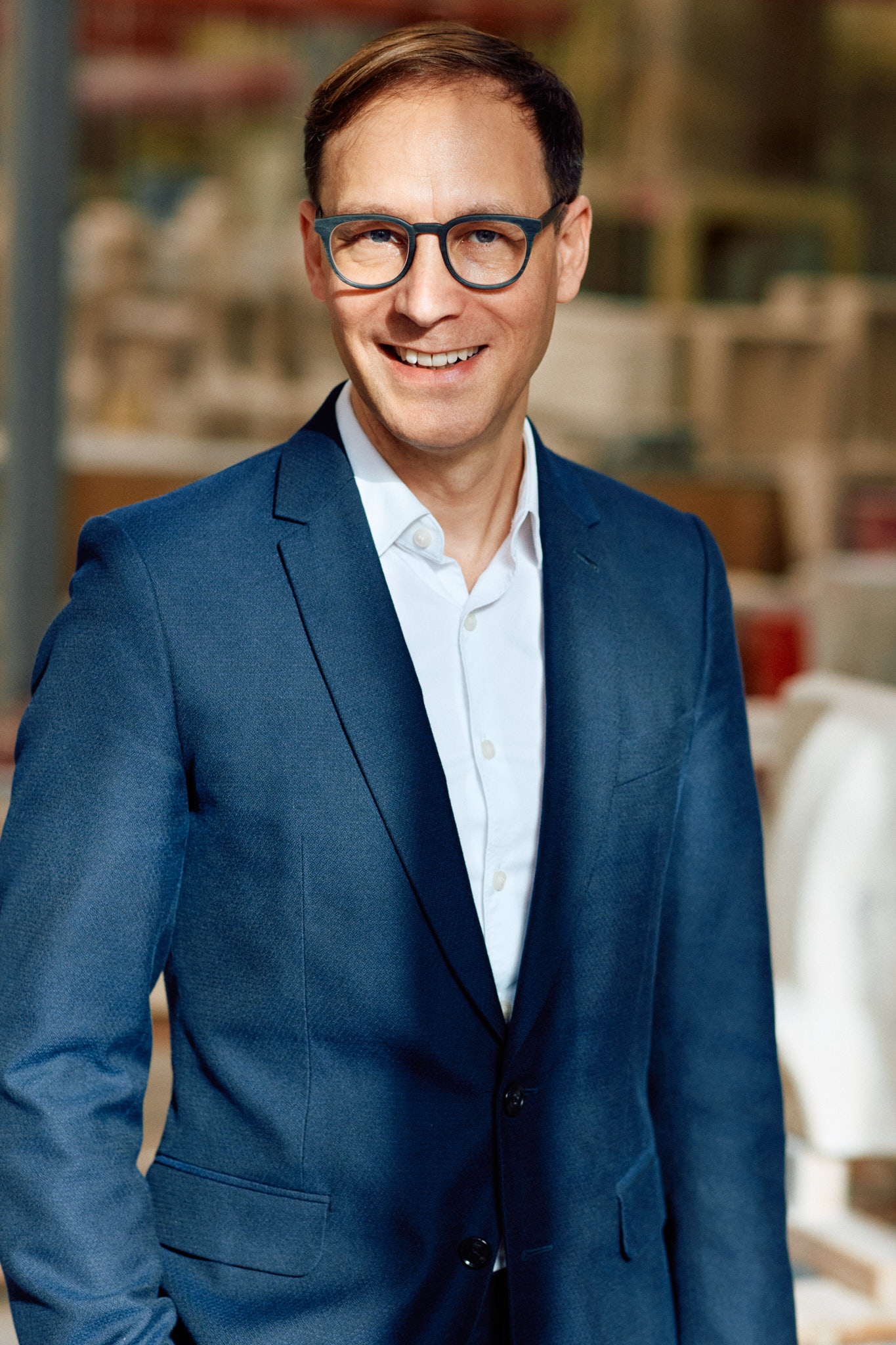
Mr. Wirz, does your company have a team that works exclusively for LAUFEN?
Peter Wirz: In actual fact, we do have a design team that focuses almost entirely on LAUFEN projects. Incidentally, that’s the great advantage of a close working relationship that continues for many years. Consistency, quality and efficiency are the hallmarks of our partnership. Nevertheless, each of our designers – including me – works on other subjects and in other fields to make sure that our creative skills don’t become blunted.
In practical terms, how does the collaboration between Vetica and LAUFEN work?
Peter Wirz: Our working relationship is now based primarily on trust, appreciation and relevance. Over the years, this has led to a sort of community of interests that goes far beyond the design service as such. New ideas emerge from both sides, to an equal extent – both from us and from LAUFEN, and from different markets. As the years have gone on, we have created a shared mindset – and a bond. But at the end of the day, the main goal of our collaboration as an extended workbench is to ensure business success in the long term.
Mr. Reymond, how does the design process work at LAUFEN? At what point does the designer get involved?
Alain Reymond: On average, about 18 months elapse between the point when the designer generates his or her original ideas and the launch of a new collection. But an enormous amount of preparatory work has to be done before the designer can get going. Strategic planning and the resultant product roadmap require intensive analysis of product lifecycles, customers’ requirements, trends and, indeed, megatrends. These include sustainability issues such as saving water and cutting energy consumption. The designer comes into play once the project is defined in a precise and detailed briefing that accords with our objectives: only then can it be handed over to the designer. As the next step, the designer produces his or her drafts, based closely on the briefing; they are then checked for feasibility and implemented in liaison with our development department. A design freeze is imposed and prototypes are produced for formal inspection and approval by the designer. The designer provides important assistance and plays a key part in launching new collections.
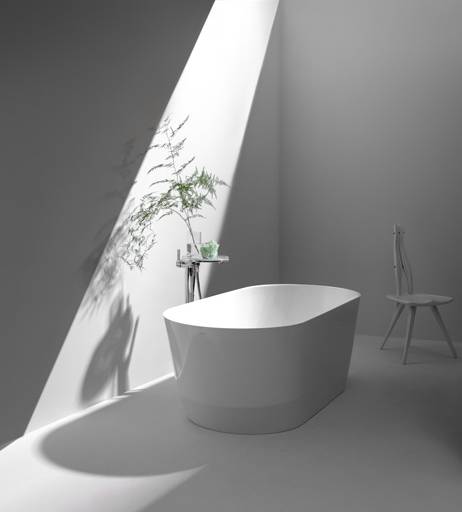
How much freedom does the designer have? How are design ideas reconciled with the production process and the technical requirements?
Alain Reymond: The designer has as much freedom as the materials, the applicable standards and the designer’s briefing allow. Ceramic, for instance, has certain properties that the designer must take into account in his or her work. That’s why constant dialogue with our in-house development department is so enormously important. The design models are constructed by our experts in CAD – taking account of the applicable standards – and the options for production are analysed. Ideas are often shuttled back and forth between the development and production departments and the designer before the models are ready for production. Peter Wirz is already thoroughly familiar with the special features of the materials and the game of ping-pong that goes on with the development team. That makes it far easier to work together.
Mr. Wirz, how has your collaboration with LAUFEN evolved during all these years, and how has it changed?
Peter Wirz: When we started working together, there was still only one written briefing to develop the design for a new product. Nowadays, we talk intensively and there’s a lot of discussion at different levels. We rub up against one another, and we challenge each other. We question, reject and consider until the final decision is reached on what should be made, and how it is to be done. Today, we have a thorough knowledge of LAUFEN’s strategic orientation, markets, competitors and many other aspects. Because of that, we have grown together over the years like a big family.
Mr. Reymond, from LAUFEN’s perspective – why do Peter Wirz’s products achieve such lasting success?
Alain Reymond: Peter Wirz has always succeeded in developing ranges for LAUFEN that are acceptable to the majority; they are highly serviceable and they feature an attractively independent, beautiful design; he has come up with solutions that are ideally matched to the production process and the materials, so they can be manufactured in large quantities. Peter Wirz himself calls this “democratic design”, or design for everyone.
Mr. Wirz, do you have equally long-lasting relationships with other clients, or is this the exception?
Peter Wirz: A customer relationship that lasts as long as the one with LAUFEN is a nice exception to the rule. However, longstanding partnerships and mandates are very important for us so we can establish the issues of design and brand as sources of genuine entrepreneurial added value and factors in long-term economic success, by working in close liaison with our customers’ companies. At present, we are providing support for companies such as ABB, Roche, Ypsomed and Stiebel Eltron as they continue their journeys to success.
You operate internationally. LAUFEN is a traditional Swiss company. As such, how does it differ from your international clients?
Peter Wirz: LAUFEN also represents a highly export-oriented company nowadays, and it enjoys an international reputation. As far as our work is concerned, this means that we don’t differentiate between a traditional Swiss company and an international corporation. Through our subsidiaries, we now provide the same service to Japanese, Chinese or American companies such as JTI, BenQ, 3M or Starbucks and to Swiss companies with lengthy traditions such as Victorinox and Kuhn Rikon.
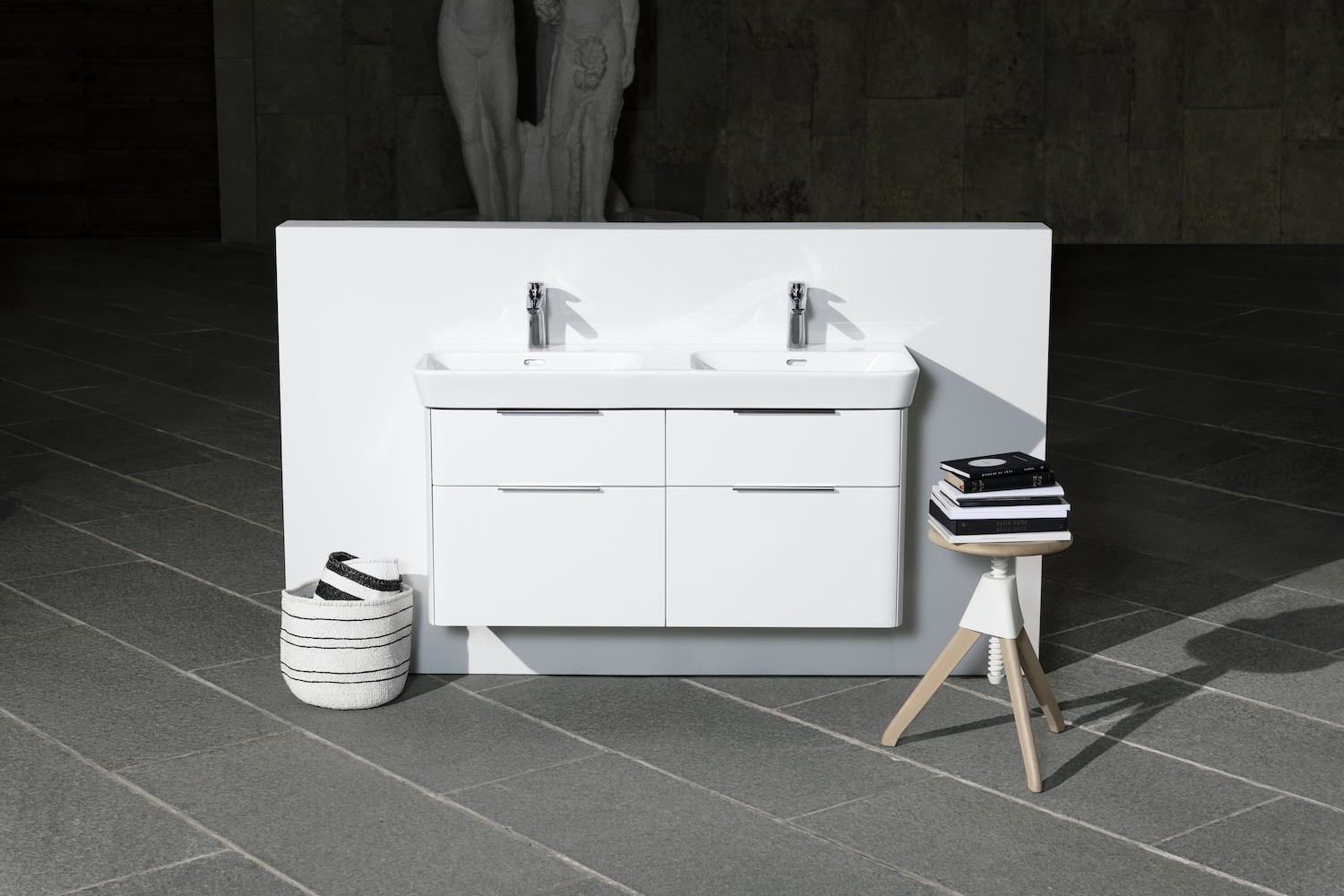
Mr. Reymond, what’s the picture as regards bathroom design – do you develop products for specific markets, or is the LAUFEN bathroom universal?
Alain Reymond: For the most part, the LAUFEN bathroom is universal. Nevertheless, certain countries have special requirements for technology or bathroom design. However, we try to integrate country-specific products such as one-piece siphon WCs for America or the Asian region harmoniously into our international series, as far as possible. But it can also happen that we produce a series specifically intended for one country. Take the Nordic market, for example, where the understanding of bathroom design is quite different. For historical reasons, the Moderna collection by Peter Wirz is almost exclusively sold in Switzerland, and that’s also why it’s produced at the LAUFEN site. One of Peter Wirz’s latest projects gave him the opportunity to plunge into the Asian market. He created a new shower-WC for this special market: it meets the requirements of the country concerned and at the same time, it integrates LAUFEN’s values such as the highest standards of quality, design, function, innovation and precision.
As an industrial designer, you operate in various fields. What particular challenge does the design of bathroom products present?
Peter Wirz: The bathroom as a space, and the daily rituals of its users, have changed dramatically in the last few years. We take a proactive approach to the changes and challenges in close collaboration with LAUFEN as well as other companies in the sanitary industry such as Duscholux. We always seek to achieve utility value and relevance in our work. The durability and serviceability of the design are always critical factors too, because bathrooms are only renewed once every twenty or thirty years on average.
Do you have a specific design language for LAUFEN products? Or is the language constantly being redeveloped?
Peter Wirz: In our work as designers, our primary focus is on people – on what they want and how they feel. Then there are the influences of the worlds where they live and, most importantly, how we deal with water as an element in the room. All these influences shape our thoughts and ideas as we move towards the product itself and the physical form that it will assume.
Mr. Reymond, how much change do you see in the requirements, wishes and needs that bathroom products have to meet, or are expected to fulfill? And how are these changes impacting the design and production processes at LAUFEN?
Alain Reymond: In my view, two major and decisive trends are exerting a critical influence on bathroom products at present. On the one hand, there is the desire for sustainability – and on the other, there is digitalization. The world is going digital – and that applies to bathrooms, too! Both these trends are making the production process more complex, and they are also setting new requirements for design. New technologies, the IoT, innovations, new partners, new processes, the circular economy: all of these aspects have to be taken into consideration nowadays. LAUFEN has recognised them, and it focuses on the two key issues that are important for the future.
A personal question for you, Mr. Wirz: which of the products you’ve designed for LAUFEN makes you especially proud? And why?
Peter Wirz: Very many of “our” LAUFEN products have become best sellers, and countless thousands of them have been installed all around the planet. That fills us with a great deal of pride, as it also represents a tribute by the end customers to the LAUFEN brand and to our work. One thing that gives us particular pleasure is the development of the LAUFEN shower-WC platform, with the RIVA and NAVIA product solutions. This is mainly because we have been able to bring many of our strengths into play during this development: intuitive user guidance, innovations, technological cooperation and the formal integration of complex electronics into a precise ceramic unibody, for example.
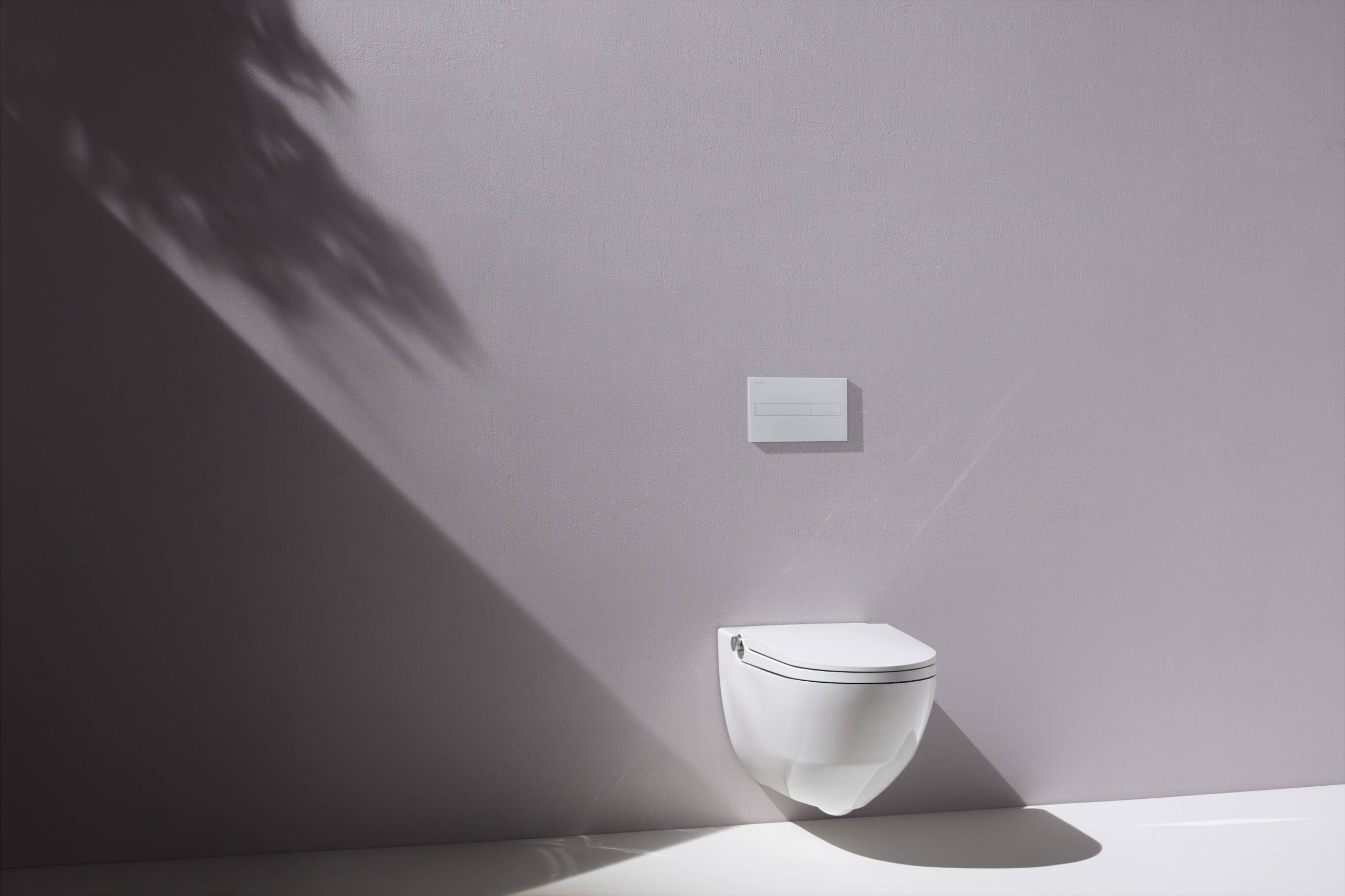
And here’s a personal question for you too, Mr. Reymond: which is your favourite LAUFEN product designed by Peter Wirz?
Alain Reymond: You probably assume that I too will pick the RIVA shower-WC as my favourite product. This was the world’s first ever fully ceramic integrated shower and WC. It has to be said that RIVA is a superb toilet – you can hardly recognise that it’s a shower-WC, even though there’s so much technical know-how and functionality concealed inside it. But as far as I’m concerned, Peter Wirz’s masterpiece is the LEMA urinal. Its conical shape creates the impression of an object with a beautiful form, rather than a urinal. So LEMA is a moulded component that meets high architectural standards as well. That’s also why this product is to be found in the world’s major airports. Whenever I go past one of them, in the new airport at Vienna for instance, I already start feeling as if I’m back home even before I’ve set foot in Switzerland.
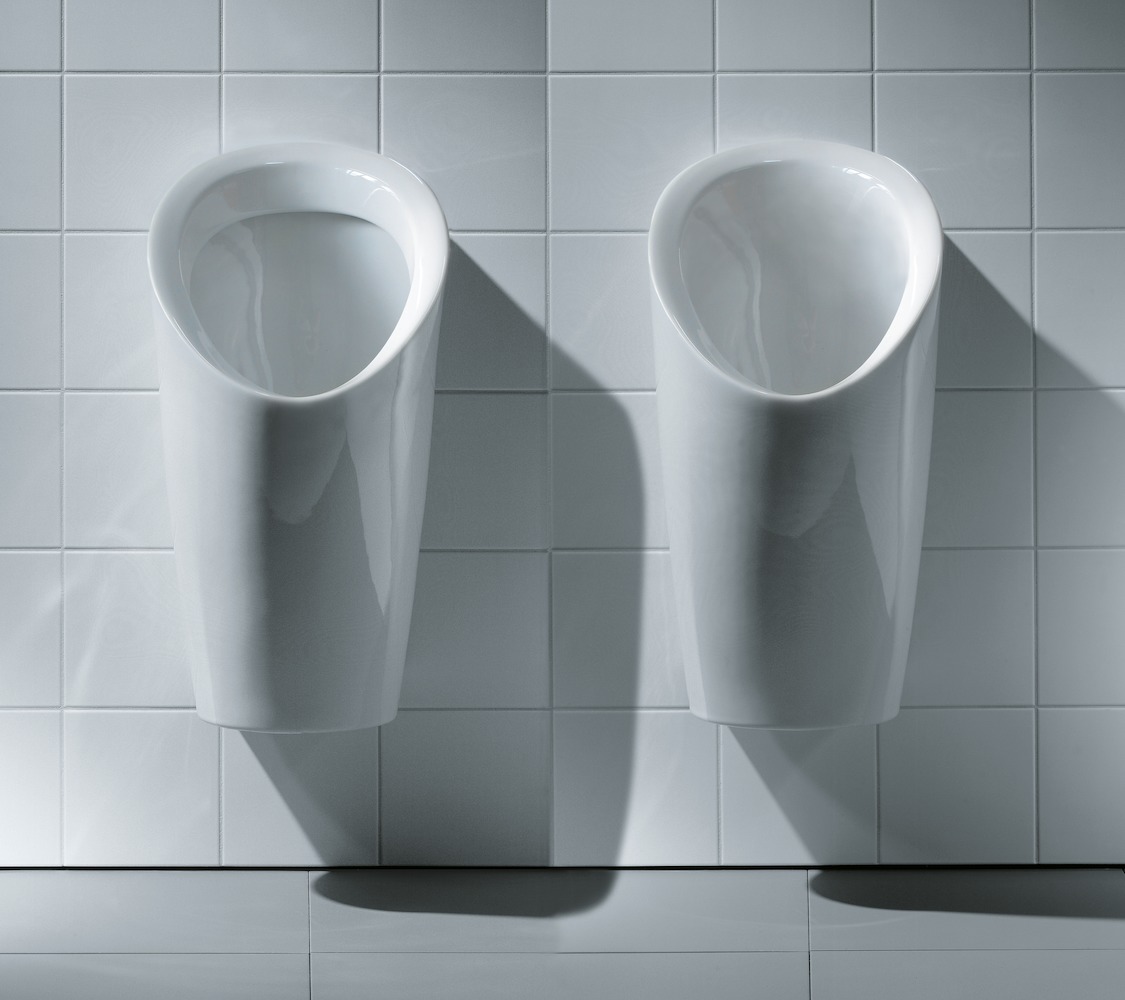
Mr. Wirz, how do you see the future of your collaboration with LAUFEN? How will it evolve? What new challenges will there be?
Peter Wirz: As a designer of LAUFEN products, working for LAUFEN, and operating in such a competitive sector, we shall have to act with more agility, courage and foresight in the future. Just as in the past, the path we travel together will not follow a straight line in the future either – in fact, it will be influenced even more strongly by iterative cycles. But speaking personally, what puts me in a positive frame of mind about the future is our shared mindset – our goal of focusing even more on sustainability and durability as time goes on.
March 2021
